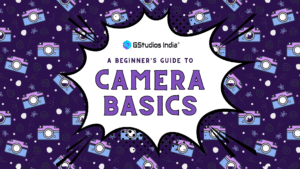
Lights, Camera, Action! The magic of cinema is unveiled through captivating storylines, stellar performances, and the masterful dance of light. Filmmaking is an intricate art form that shapes mood, enriches atmosphere, and navigates the audience’s emotional journey.
Imagine your favorite film without its lighting magic. The chilling suspense of a horror movie becomes mundane, the romantic allure of a love story fades, and the epic battles lose their intensity. It’s not just about illuminating actors; it’s about painting the emotional canvas that captivates audiences across the globe.
🚀Join us as we delve into the enchanting world of cinema and explore the techniques that elevate films.
💡Why is Lighting Essential in Filmmaking?
✅ Setting the Mood: Lighting sets the emotional tone of a scene. Picture a dimly lit alleyway in a thriller, casting shadows that whisper secrets and conceal danger. Or imagine the warm, golden hues of a sunset in a romantic drama, painting love in every frame. Whether vibrant and bright or dark and brooding, lighting crafts the emotional landscape of a film, guiding audiences through the narrative’s highs and lows.
✅ Directing Attention: Just as a spotlight steals the show on stage, strategic illumination draws the audience’s gaze to the focal points of a scene. It illuminates the protagonist in their moment of triumph or casts a menacing shadow over the antagonist hiding in the darkness. By manipulating light and shadow, filmmakers help us focus our eyes and shape our perception of the narrative.
✅ Enhancing Visual Storytelling: Each flicker and subtle change in brightness communicates volumes without a single word. Lighting can signal the time of day, weather conditions, or even the passage of time itself. From the harsh fluorescence of a hospital room to the comforting glow of a cozy fireplace, these techniques create immersive scenes rich in depth and authenticity.

🔦 Types of Lighting
1. Natural

It refers to light from natural sources, primarily the sun and moon. It’s often used in outdoor scenes or interiors with large windows that allow a lot of sunlight. Filmmakers may use reflectors, diffusers, or other tools to control natural light. The key characteristics are its variability and the challenges it presents in maintaining consistency across different takes or scenes.
2. Artificial

It includes any man-made light source, such as studio lights, LEDs, fluorescent lights, and tungsten lights. These lights create controlled and consistent conditions. Filmmakers can manipulate artificial lighting to achieve specific effects, moods, and atmospheres, regardless of the time of day or weather conditions.
3. Ambient

It refers to the general, overall illumination in a scene. It is usually soft and diffused, providing an even light that doesn’t create harsh shadows. This helps to set the mood and atmosphere of a scene. Ambient lighting can be natural or artificial and is often supplemented by other techniques to achieve the desired effect.
4. Practical

It refers to light sources that are visible within the frame and are part of the scene’s environment, such as lamps, candles, or neon signs. These lights can serve both a functional and an aesthetic purpose, adding realism and depth to a scene. Practical lights can be used to illuminate actors and set pieces while also contributing to the overall visual composition.
5. Motivated

It is a technique where the source of light within the scene is visible or implied, and the light is designed to look as though it is coming from that source. For instance, if a scene is set in a room with a window, the light on the actors might come from a studio light positioned to look like sunlight streaming through the window. This technique helps maintain realism and coherence within the scene.
🎥 But How Do Filmmakers Achieve Cinematic Excellence?
It’s all about technique. From the classic three-point lighting setup to the avant-garde use of color filters and practical effects, the arsenal of these techniques is as diverse as the stories they illuminate. Whether creating dramatic silhouettes, crafting ethereal moonlit landscapes, or simulating the flicker of a candle flame, these technicians are the unsung heroes behind the scenes, painting with light to bring visions to life.
1. Setting the Mood: Like a painter choosing colors to evoke emotions, filmmakers use lighting to set a scene’s tone. Whether it’s the warm, golden hues of a sunset symbolizing tranquillity, or the harsh lights of a police interrogation room heightening tension, every choice serves a narrative purpose.
2. Playing with Shadows: In cinema, shadows are not merely the absence of light; they are integral components of storytelling. By strategically placing shadows, filmmakers can create depth, mystery, and intrigue. Think of the iconic film noir genre, where shadows often conceal as much as they reveal, adding layers of complexity to characters and plot.

3. Enhancing Character Dynamics: Pay close attention to how light interacts with characters on screen. Soft, diffused lighting might convey innocence and vulnerability, while harsh, angular lighting can signify power or menace. It isn’t just about illuminating faces; it’s about revealing the inner workings of characters and their relationships.
Just as a spotlight illuminates the stage, lighting in film reveals the inner workings of characters’ minds and hearts. Harsh shadows may underscore a protagonist’s internal conflict, while a soft halo of light hints at their vulnerability. By playing with light and shadow, filmmakers breathe life into characters, crafting nuanced portraits that resonate with audiences.
4. Creating Visual Symbolism: It isn’t always literal; it can be symbolic, conveying themes and motifs without uttering a single word. Consider chiaroscuro lighting in classic cinema, where contrasting light and shadow symbolize the duality of human nature or the eternal struggle between good and evil.
At its core, filmmaking is about storytelling, and thus, lighting is a powerful storyteller in its own right. Through the interplay of light and shadow, filmmakers can direct the audience’s attention, convey symbolism, and evoke powerful emotions. Whether it’s a flickering candle in a haunted mansion or the neon glow of a bustling city street, it enriches the narrative tapestry, inviting viewers on a visual journey.

5. Guiding Audience Attention: Just as stage directors use spotlights to draw focus, filmmakers use lighting to guide audience attention within a frame. By highlighting specific elements or characters, directors can subtly guide the viewer’s gaze and control the flow of narrative information.
Ultimately, the true measure of a film’s success lies not in box office receipts but in its ability to resonate with audiences on an intuitive level. It plays a crucial role in shaping the audience’s emotional response, immersing them in the story and evoking genuine empathy for the characters. Whether it’s the heart-pounding suspense of a thriller or the heartwarming romance of a love story, lighting leaves an indelible impression on viewers long after the credits roll.
6. Evolution of Techniques: From the stark, high-contrast of early black-and-white films to the intricately layered setups of modern blockbusters, the art of lighting has evolved significantly. Today, advancements in technology allow filmmakers to push the boundaries of creativity, crafting visual spectacles that mesmerize audiences worldwide.

7. Depth and Dimension: Think of it as the sculptor’s chisel, shaping the visual landscape of a film with depth and dimension. Techniques like chiaroscuro (the contrast between light and dark) and three-point (using key, fill, and backlight) add layers of complexity to scenes, transforming two-dimensional images into immersive worlds teeming with texture and detail.
8. Creating Atmosphere: Every film has its unique atmosphere, crafted through a delicate balance of lighting, set design, and sound. Whether it’s the eerie glow of moonlight in a horror film or the warm hues of a sunset in a romantic comedy, it plays a pivotal role in establishing the film’s mood and transporting audiences to distant worlds.

9. Time and Place: Like a compass guiding travelers through uncharted territory, lighting anchors viewers in the time and place of the story. The soft, diffused light of dawn may signal the beginning of a new day, while the harsh glare of fluorescent bulbs transports audiences to the sterile confines of a hospital ward. By manipulating light, filmmakers can blur the lines between reality and fiction, immersing viewers in the film’s world.
10. Highlighting Focus: In the vast expanse of the cinematic canvas, it serves as a spotlight, drawing attention to key elements within the frame. Whether it’s a pivotal character, a crucial prop, or a symbolic motif, strategic lighting guides the viewer’s gaze, ensuring that every detail serves a purpose in advancing the narrative.

11. Enhancing Visual Aesthetics: Beyond its functional role, it elevates the visual aesthetics of a film, transforming ordinary scenes into breathtaking tableaux. Whether it’s the soft glow of candlelight dancing across actors’ faces or the dramatic interplay of light and shadow in film noir, it adds a layer of visual poetry to the cinematic experience, captivating audiences with its beauty and elegance.
12. Technical Considerations: Behind every stunning visual is a meticulous process of technical planning and execution. Filmmakers must consider factors such as equipment choice, color temperature, and light intensity to achieve the desired aesthetic effect. From the warm golden hues of tungsten to the cool blue tones of daylight-balanced LEDs, each choice contributes to the film’s overall visual language.

13. Creative Freedom: In the boundless realm of filmmaking, there are no rules, only endless possibilities. It offers filmmakers a canvas on which to unleash their creative impulses, pushing the boundaries of imagination and innovation. Whether experimenting with unconventional light sources or challenging traditional conventions, filmmakers have the opportunity to chart their course and define their artistic identity.
14. Adapting to Constraints: Filmmaking is a journey of challenges and constraints, from limited budgets to unpredictable shooting conditions. Yet, it is precisely in the face of adversity that creativity thrives. By embracing constraints as opportunities for innovation, filmmakers can discover new techniques and solutions for achieving their artistic vision, proving that where there’s a will, there’s a way.

📚RESOURCES FOR FURTHER LEARNING
In conclusion, lighting is not just an afterthought in filmmaking; it’s a fundamental aspect that can create or destroy a cinematic experience. By mastering this art, filmmakers unlock a realm of possibilities, turning ordinary scenes into extraordinary moments. Next time you find yourself engrossed in a film, take a moment to appreciate how light and shadow weave together the magic of the silver screen. It is not merely a technical aspect of filmmaking—it is the soul that breathes life into the silver screen.
🌟 Join Our Filmmaking Journey!
Discover more about film lighting and elevate your skills. Limited seats are available—Book your FREE CONSULTATION today!
Authored and Graphics by: Maansi Jain





